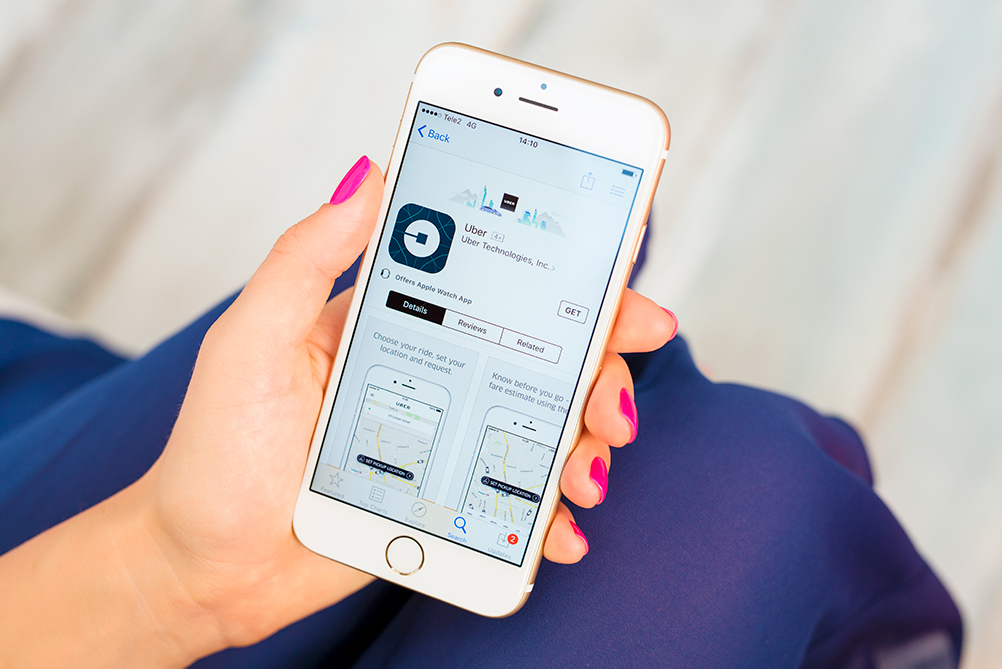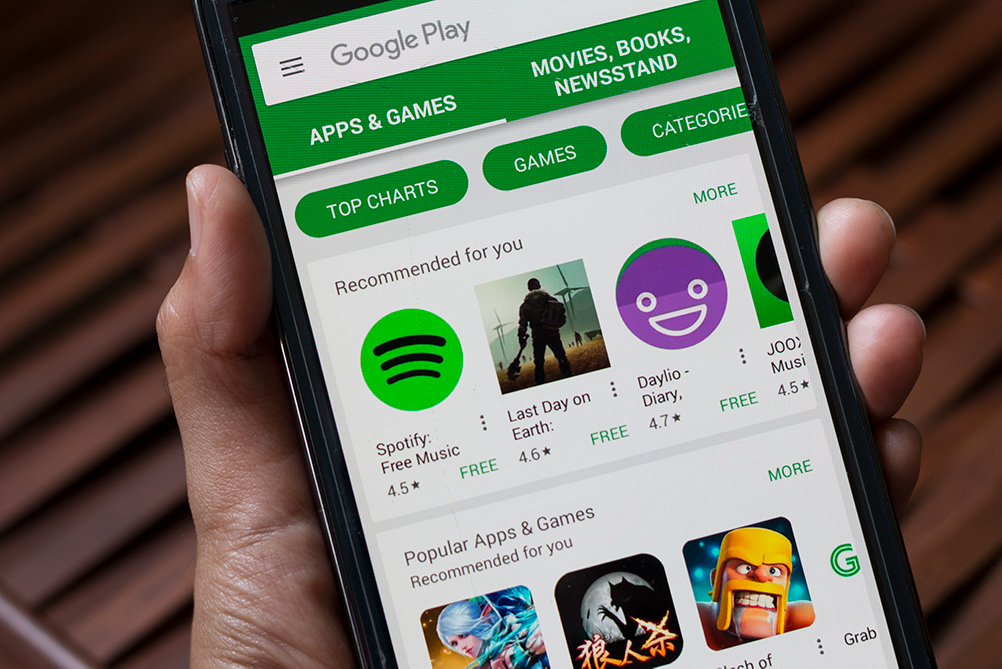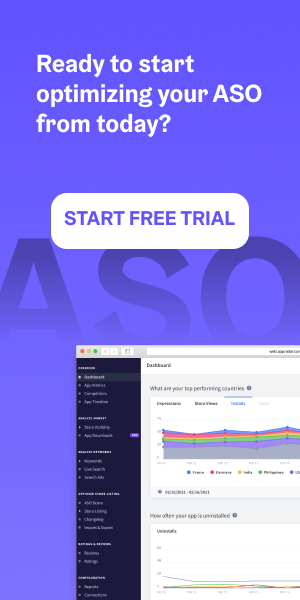You are new to App Store Optimization and you want to make sure you implement the right ASO strategy to make your app or game take off on the stores? You can’t miss this post! Discover 20 ASO mistakes you should not do when optimizing your app or game.
Table of Contents
20 mistakes to avoid when working on ASO (App Store Optimization)
Please, avoid these mistakes as much as possible – they could ruin your ASO efforts!
1. Not understanding ASO nor knowing its importance on business
First, it might seem obvious, but it’s crucial to know about App Store Optimization and to know what it means and how it works. In a few words, ASO is the process of optimizing a mobile app or game to improve its visibility on the app stores and to generate more organic download and improve its conversion rate to reduce user acquisition costs.
ASO = traffic + conversion + retention
In short, ASO has a direct impact on business. There are two ways your app can be discovered by users on the stores: in the Search section or in the Browse / Explore section. If Search plays a big role in app discovery, Browse is always increasing with new ways implemented by Apple to discover new apps. For this reason, you should focus both on keyword optimization and optimize to appear in the Explore sections of the stores.
2. Seeing ASO as SEO for apps
SEO and ASO are not the same things. If they are similar, it would be a mistake to believe that they work the same.
SEO is the process of optimizing the visibility of a website in Google Search. ASO is the process of optimizing an app and its listing to increase visibility, improve conversion rate (and thus downloads) and reduce user acquisition costs.
Another difference between ASO and SEO is that paid campaigns have an impact on ASO, but not on SEO.
ASO and SEO are linked, as you can work on SEO for your listing to index its URL on Google Search, but they are not the same.
3. Leaving the quality of the product aside
This is a very important point and you might think it is obvious but it is really important to take it into account.
Did you know that the stores take into account the apps’ volume & speed of downloads, the user engagement and retention, and even the users reviews in the case of Google Play, to rank them? Also, they will be less likely to rank and feature an app that has bugs and does not work well.
Having a good and quality product is important for users satisfaction and it could actually bring you more organic downloads. If your users are satisfied, they will do word-of-mouth and speak well about your app, which could make others users download the app, and so forth.
It is also important to take into account stuff like push notifications, inbound marketing, CRM, communication strategy, app value, etc. to engage with the users, rank higher and increase the app¡s visibility in the stores.
Finally, it is also important to have a great product as if your users and reviews are negative, they could have a really bad impact on your Conversion Rate.
4. Not studying your app market niche
It would be a pity not to study your market niche and not to know your main competitors and how they work, and especially the top ranking apps in your category. Study the on-metadata field of their listing, how they update it and what changes they implement, the visuals, the lexical field…
It is important to do so to be in line with what users are expecting and how apps are positioning for this sector, so that you can identify good practice and implement it to your app or game.
5. Waiting for the app to be launched before working on ASO
There is no need to wait for your app to be launched to start working on ASO. And it’s more – doing so would make you lose a lot of potential!
Pre-launch ASO is definitely a must: it enables you to fully prepare your app and its listing for launch day. You can do an extended keyword research, prepare the content of the listing, look at competitors to see how they are working on their listing.
6. Not choosing the right fields for your keywords
Finding the right keywords and placing them in the right fields is very important for ASO. Start with the first step and try to define your app with the words that come to mind. Try to find keywords that users will use to look for your app for them to bring you traffic. You could also use keywords suggestions and auto-complete to get more ideas.
When beginning, try to focus on mid-long tail keywords with low competition to begin with, and with time start working on keywords with higher traffic and competition. Once you have a consistent list of keywords (from 50 to 120 depending on the app and on it’s languages), it is time to find out where you are going to place them. And this is different for Apple App Store and for Google Play:
- App Store: there is very little space to place keywords for ranking on the App Store. The App Name (30 characters), the Subtitle (30 characters) and the keywords field (100 characters) are the only 3 on-metadata fields that rank keywords, which makes a total of 160 characters to include your most important keywords (but did you know there was an ASO hack to get more characters?)
- Google Play: there is more space for you to add keywords on Google Play as the description is also raking. Add your main keywords to the Title (50 characters), Short Description (80 characters) and Description (4,000 characters). This represents a total of 4,110 characters! It is much more similar to SEO than the App Store as all of the Play Store’s fields are enabling keywords to rank. However, keep in mind that keywords in the Title have more weight than the keywords that are present in the Description field.
More info | App Store and Google Play keyword tool
In any case, it is important to find the right balance between adding keywords and optimizing for Conversion Rate – you cannot only add keywords without any sense without thinking about readability.
7. Neglecting the importance of visual assets
ASO is not only about traffic and it is important to have quality visuals to make people want to download the app. If you have a high quantity of traffic but that doesn’t convert into users, it doesn’t make sense and it won’t bring any result to your business. Conversion Rate is key and cannot be left aside.
To make users want to download your app, provide them with great visual assets: the icon, screenshots and videos need to convince them that the app or game is worth downloading. Work on their design, on their content (for the screenshots, the main powerful features should be displayed in the first 2 / 3 screenshots), and test the different options to know what works best.
Keep in mind that the higher the conversion rate, the more installs you will receive and the more positive impact it will have on your ASO.
8. Not doing A/B tests to find what works best
As we’ve just mentioned, testing your visual assets (app icon, screenshots, vídeo) & the textual fields is key to improve and find what works best in terms of conversion. We speak about A / B testing which consists in testing two versions of an element of the listing and measuring their impact on the install volume.
Google Play Console has its own platform to do so, called Experiments. Apple App Store doesn’t, so you will need to use an external A/B testing tool to proceed to A/B testing for your Apple App Store apps & games, such as SplitMetrics or StoreMaven.
9. Working too hard on the wrong keywords
As we mentioned in one of the former points, it is important to find the right keywords and place them in the right fields. If you focus and work too hard on the wrong keywords, you won’t see the results you expect after your optimization efforts.
Do not focus on keywords which difficulty is too high or head-tail if your app was just launched. There is no need to rush in keywords optimization and you should go step by step as your app grows.
10. Focusing on Search only and forgetting about Browse
In the apps stores’ very first days, the main way to discover new apps was through the Search section, and there were very few ways to Explore. However, it has changed a lot since then and today, there are many ways you can find new apps by browsing the stores, through Top Charts, Featured apps, Similar apps, and many other user-custom sections as well.
Still, some app marketers decide to focus almost only on keywords ranking, which is another ASO mistake. Indeed, ranking in Search is great, but it can be hard and being able to rank in Browse could bring a lot of visibility to an app. This is why you should combine both keywords optimization and work on making your app rank in the Explore sections of the stores.
11. Having a single ASO strategy for Google Play & App Store
Apple App Store and Google Play Store are two different platforms and each of them follows its own rules and functioning. You cannot work on a strategy for the App Store and replicate it for Google Play. The app store ranking factors are different for each of the two stores. You first need to acknowledge these differences between the two and understand how they work to be able to know how you need to optimize for each of them. As we’ve seen before, in terms of ASO on-metadata factors, their ranking fields are not the same, and this is only example out of many of their differences. Let’s see them all more in details, and to do so we will have a look at it in two different sections: Search and Conversion rate.
Search
We’ve seen it before, Apple App Store and Google Play Store are different in terms of keyword rankings – Apple App Store’s Description field does not rank while Google Play Store’s one does (and it makes quite a difference!).
Make sure you place the right keywords in the right field for each app store and don’t just replicate what you are doing for one with the other.
Conversion Rate
Conversion rate should never be forgotten, and optimizing it for the App Store is different than optimizing it for Google Play.
Google Play Console provides its users to A/B test every element of the app listing through its own platform, Experiments, while it is not the case for with App Store Connect. When testing various versions of an element, you should do it with one element at a time to be able to identify clearly where the difference in conversion comes from.
Also, Google Play enables to add emojis and rich formatting to the listing to have a better impact on Conversion Rate, while the App Store does not allow it.
12. Thinking that ASO and paid UA are not related
This is a common mistake but ASO does have an impact on paid UA and vice versa. As we mentioned before, optimizing the store listing enables you to increase visibility, generate downloads and reduce user acquisition costs. As for paid UA, it also impacts organic traffic (as you can see thanks to the organic uplift).
You should work on your ASO and paid UA strategy together as a whole and combine them to get better results at a lower cost in terms of money, efforts and time.
13. Seeing ASO as a one-time job
Another common mistake from app marketers: thinking that you need to work on ASO once, and stopping to do so when you get results.
ASO is a process and should not be seen as a one-time job or something you can work on from one day to another. Keyword optimization, Browse rankings, A/B tests, user retention, KPIs tracking, competition monitoring… all of this requires time and effort.
We believe that there is always room for improvement in App Store Optimization. Indeed, things are always changing, the algorithms, the stores… and you always need to keep an eye on the app stores and how your app is doing, if your keywords are going up or down, etc. Another concrete proof is a long-run effort is that every day, more and more new apps are added to the stores which means that you will always have more and more competition, and this will impact your rankings, both in Search and in Browse.
In short, monitor the main KPIs of your apps on a regular basis (daily if you can), keep an eye on the changes you notice and analyse where they are coming from and what are the reasons.
14. Not monitoring competition
There are different types of competitors you should always monitor:
- Your product competitors – the mobile apps / games that compete with you directly in term of product
- Your ASO competitors – the mobile apps / games that compete with you in terms of ASO rankings, both in Browse and in Search
- Your product & ASO competitors – the mobile apps / games that compete with you on both
Not tracking these 3 categories of competitors would be a pity, as you can learn a lot from your competitors and how they optimize their product and listing. By monitoring them, you can see how the changes they implement on their listing is impacting their ranking and find good practice / things not to do.
15. Doing Black Hat ASO
It might be tempting, but you should definitely not do black hat ASO. Fake installs, fake reviews, bot installs… It is true that some of these techniques work (and not even all of them), but when Google or Apple catches you, it means very bad news for your app. What we recommend you is simple: not to do it.
16. Working without any ASO tool
To be able to optimize your mobile app or game properly, you need to use an ASO tool. If you don’t use it, you won’t be able to track the main KPIs and metrics to see how the app is doing.
There are different ASO tools on the market nowadays, that were created since the birth of ASO, and thanks to them you can track many different KPIs, spy on your competitors, monitor your ratings and reviews, and many other things. It would definitely be a mistake to miss all of the precious data that ASO tools can provide you with.
Our recommendation? TheTool (of course 😝), created by the app marketing agency PICKASO and one of the best performance-based ASO tool.
17. Not localizing your app store listing
It depends on the market, but if your app can be downloaded in different countries and languages, you should definitely localize the listing to other locales where your potential users might be.
However, keep in mind that localizing the app does not mean making a simple translation of the on-metadata factors. You need to adapt the content to the country you want to localize in, to its culture, and to do so, it is necessary you analyze the market there and the main competitors.
18. Not following the best ASO experts
To keep learning about ASO every day, we recommend you to follow these awesome ASO masters:
- Nadir Garouche
- Steve Young
- Thomas Petit
- Michal Mroz
- Chingiz Talybov
- Isak Ström
- Johannes Von Cramon
- Thomas Kriebernegg
- Constantin Schmidt
- Peter Fodor
- Manuel Prueter
- Lina Danilchik
- Alejandro Melero
- Tim Jones
- Anatoly Sharifulin
- Peggy Anne Salz
- Jiri Chochlik
- Simon Thillay
- Ariel Michaeli
- Valeria Shytikova
- Karina Klepikova
- Darya Kuryanovich
- Parv Bhargava
- Noga Szpiro
- Jorge Canga
- Ilia Kukharev
- Jesse Lempiäinen
- Gabe Kwakyi
- Fede Behrens
- Sylvain Gauchet
- Daniel Peris and PICKASO ASO team
You should definitely follow these mobile growth & app marketing experts to stay up-to-date and keep on learning about App Store Optimization. If you can, you should also join App Marketing Events (physical or online) such as APPLAUSE or App Promotion Summit to learn from them and network with other professionals.
19. Not keeping an eye on the stores’ algorithm updates and changes
If you don’t follow up with the algorithm changes, it might ruin your ASO strategy and efforts. This is another reason why you should follow the mentioned experts right above, to be aware of all the updates and changes and to be able to adapt to them. You should also join the Slack group ASO Stack to know everything that’s new.
Google Play Store and Apple App Store usually update and change their algorithm a few times a year and if you are not aware of it, you won’t be able to react in time while your competitors will.
20. Not monitoring the main ASO KPIs
If you don’t take the time to track your ASO KPIs, you will miss a lot of insights and won’t be able to improve properly. It is important you define the main metrics you want to track on a regular basis and stick to it. We recommend you to follow:
- Keywords rankings – yours and your competitors’
- Top Charts rankings – yours and your competitors’
- Featured rankings – yours and your competitors’
- Category rankings – yours and your competitors’
- Similar / related apps visibility – yours and your competitors’
- Reviews & Ratings – yours and your competitors’
- Conversion Rate
- Organic Installs
- Organic Uplift – the natural boost in organic traffic caused by paid marketing actions
- Revenue – total amount of income generated
In fact, there are main KPIs you can track and this is only a list of the most important ones you need to monitor, but if you would like to have a more detailed list, we have a great post on TheTool that explains you how to track and optimize the main ASO KPIs.
Also keep an eye on your competitors’ listing and the changes they apply to see how it impacts their rankings.
Conclusions
We hope this list will help you in your ASO process and you can take some tips and insights out of it to make your app grow! If you want to keep learning about ASO, have a look at these great ASO tips.
To conclude, keep in mind that ASO is a process and that there is always room for improvement. Have fun 🙂








